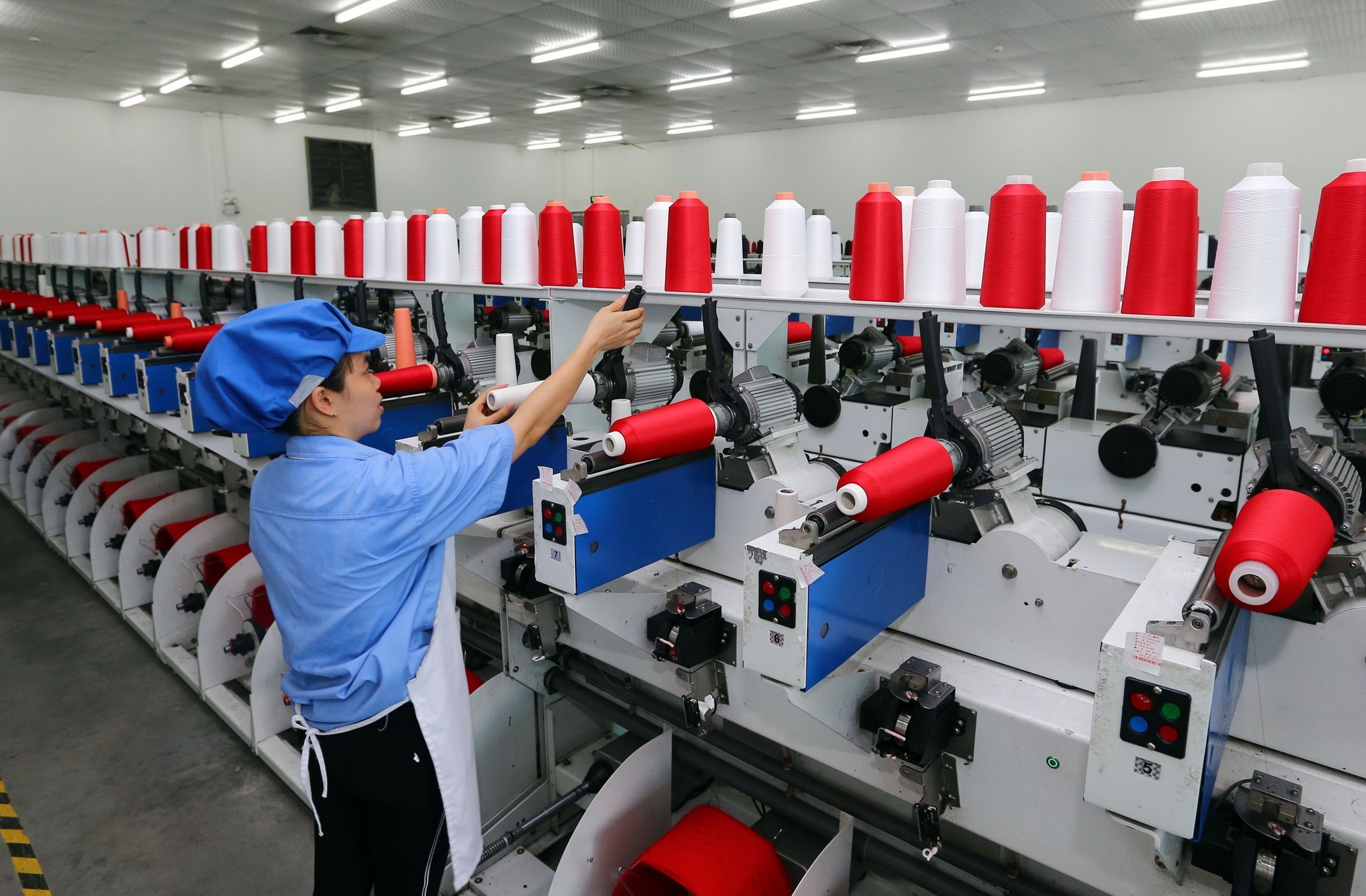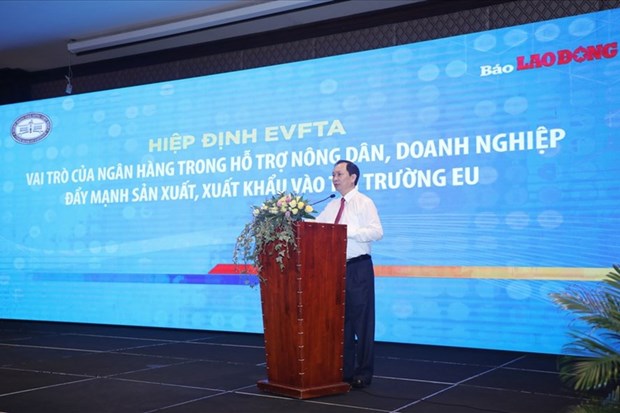ACCIONA, a leading group for sustainable infrastructure solutions and renewable energy projects of Spain, officially debuts ACCIONA Vietnam Company.

Photo for illustration. (Source: VNA)
According to information released at a recent Vietnam-Spain online trade conference on business and investment opportunities created by the European Union-Vietnam Free Trade Agreement (EVFTA), the impact of the novel coronavirus (COVID-19) pandemic has heavily hit two-way trade.
The opening 10 months of the year witnessed mutual trading stand at only US$1.99 billion, a drop of 17.59% from the same period last year. Of the figures, Vietnamese exports to Spain reached US$1.6 billion, down 20.5%, while its imports hit approximately US$394 million, a slight annual fall of 2.95%.
With regard to the potential for greater trade and investment co-operation between the two nations, Deputy Minister of Industry and Trade Do Thang Hai said that there remains plenty of room to expand beneficial co-operation between both sides for mutual development. Indeed, the enforcement of the EVFTA, which came into effect on August 1, offers a great chance for firms from the two countries.
This trade deal has brought significant benefits to Vietnamese and EU businesses, including those from Spain, through unprecedented openness with almost 100% of tariff lines returning to 0% after from seven to 10 years, thereby offering incentives for services, finance, transportation, insurance, and government procurement.
Furthermore, Spanish businesses are also attempting to take full advantage of investment opportunities locally that have been created by the EVFTA. At the end of last year, ACCIONA, a leading group for sustainable infrastructure solutions and renewable energy projects of Spain, officially debuted ACCIONA Vietnam Company in order to invest in infrastructure projects in the Southeast Asian nation.
Banks seek solutions to help farmers foster exports to EU
A workshop discussing the role of the bank in supporting farmers and businesses to boost production and export to the EU market was organized by the State Bank of Vietnam and Labor Newsspaper on November 20, Vietnam News Agency has reported.

Governor of the State Bank of Vietnam (SBV) Dao Minh Tu speaks at the workshop. (Photo: laodong.vn)
The EU-Vietnam Free Trade Agreement (EVFTA), which came into force on August 1, has been described as an “expressway” leading Vietnamese goods, especially agricultural and aquatic products, which are among the country’s strongest, to the EU.
However, the EU’s strict requirements could be an issue for businesses or farmers seeking to enter the market on their own.
Nguyen Dinh Tung, Chairman and General Director of Vina T&T Group, said that, in value chains, apart from connectivity between farmers and businesses, capital sources also form a very important link.
Farmers need capital to make investments but accessing loans is problematic. The engagement of banks in these chains would therefore facilitate farmers’ access to capital, he noted.
Deputy Governor of the State Bank of Vietnam (SBV) Dao Minh Tu said that as of October 30, credit granted for agriculture and rural area-related activities had increased 6.5 percent against the end of 2019. It now stands at about 2.16 quadrillion VND (93.3 billion USD), including 27 trillion VND for hi-tech agriculture and 5 trillion VND for enterprises involved in value chains.
Ha Thu Giang, Deputy Director of the SBV’s Department of Credit Policies for Economic Sectors, said developing connectivity in agriculture is viewed as an inexorable trend and one of the key solutions to improving the effectiveness of agricultural production.
The central bank has adopted many policies to channel capital into the sector, she noted, adding that more than 80 credit organisations and 1,181 people’s credit funds have granted loans for agriculture and rural areas nationwide.
This type of credit grew 19.83 percent between 2016 and 2019; higher than the overall growth rate of 16.02 percent, Giang said.
She also acknowledged certain challenges, such as farmers violating contracts, the modest number of hi-tech agricultural zones, and the lack of effective models.
Of a similar mind, Can Van Luc, Chief Economist at the Bank for Investment and Development of Vietnam (BIDV), pointed out that policies on hi-tech application in agriculture haven’t been conducted consistently, cooperation between farmers, the State, banks, scientists, businesses, and cooperatives/associations remains unsustainable, and some companies haven’t seriously realised their commitments to buy products from farmers.
Vietnam among fastest growing per-capita income nations in Asia-Pacific
Vietnam is projected to be one of the economies posting big gains in the world’s per-capita income rankings during the quarter-century through 2025, Vietnam News Agency has quoted data analysed by Bloomberg.
Armenia, Georgia, and Bangladesh were also named in the list.
Vietnam's per-capita income was reported to increase over the past time
Overall, developing Asian countries will see per-capita GDP rise six-fold in the period.
China’s surging economy is set to overtake 56 countries in the rankings, placing 70th in the world on the metric.
Turkmenistan is projected to be the only country climbing further up the rankings than China, advancing 58 spots.
Vietnam’s economy could grow bigger than Singapore by 2029, the UK-based Global Business Outlook recently cited the Development Bank of Singapore (DBS)’s report.
In its report, the DBS predicts that Vietnam could grow at a pace of 6 percent to 6.5 percent in the next 10 years.
Currently, the Vietnamese economy is worth 224 billion USD. This means it covers 69 percent of Singapore’s economic size which is worth 324 billion USD./.